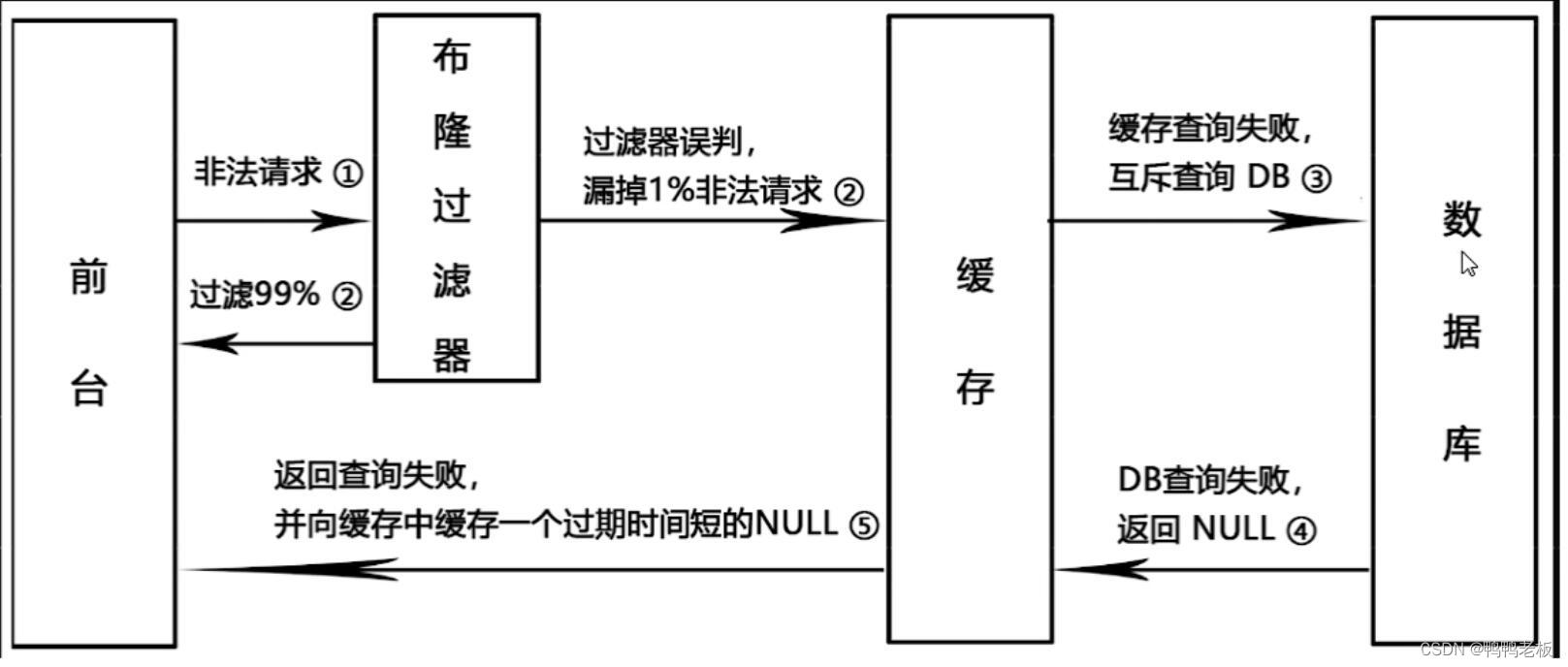一、线性表
在日常生活中,线性表的例子比比皆是。例如,26个英文字母的字母表(A,B,C,……,Z)是一个线性表,表中的数据元素式单个字母。在稍复杂的线性表中,一个数据元素可以包含若干个数据项。例如在第一章中提到的学生基本信息表,每个学生为一个数据元素,包括学号、姓名、性别、籍贯、专业等数据项。
由以上两例可以看出,它们的数据元素虽然不同,但同一线性表中的元素必定具有相同的特性,即属于同一数据对象,相邻数据元素之间存在这序偶关系。诸如此类由n个数据特性相同的元素构成的有限序列成为线性表。对于非空的线性表或线性结构,其特点是:
(1)、存在唯一的一个被称作”第一个“的数据元素;
(2)、存在唯一的一个被称作”最后一个“的数据元素;
(3)、除第一个之外,结构中的每个数据元素均只有一个前驱;
(4)、除最后一个之外,结构中的每个数据元素均只有一个后继。
二、顺序表和链表
1、顺序表的定义:
顺序表是用一段 物理地址连续 的存储单元依次存储数据元素的线性结构,一般情况下采用数组存储。在数组上完成数据的增删查改。
顺序表可以分为静态顺序表和动态顺序表:静态顺序表:静态顺序表:使用定长数组存储元素 。存储结构typedef struct SeqList { SLDataType x; int size; }SeqList动态顺序表:动态顺序表:使用动态开辟的数组存储。typedef struct SeqList { SLDataType* Array; int size; //顺序表当前的元素个数 int capacity; //顺序表的最大容量 }以下是实现顺序表的接口代码:
头文件:
#define _CRT_SECURE_NO_WARNINGS 1 #include <stdio.h> #include <assert.h> #include <stdlib.h> typedef int SLDateType; typedef struct SeqList { SLDateType* a; int size; int capacity; }SeqList; // 对数据的管理:增删查改 void SeqListInit(SeqList* ps); void SeqListDestroy(SeqList* ps); void SeqListPrint(SeqList* ps); void SeqListPushBack(SeqList* ps, SLDateType x); void SeqListPushFront(SeqList* ps, SLDateType x); void SeqListPopFront(SeqList* ps); void SeqListPopBack(SeqList* ps); // 顺序表查找 int SeqListFind(SeqList* ps, SLDateType x); // 顺序表在pos位置插入x void SeqListInsert(SeqList* ps, int pos, SLDateType x); // 顺序表删除pos位置的值 void SeqListErase(SeqList* ps, int pos); //修改顺序表pos位置的值 void SeqListModify(SeqList* ps, int pos, SLDateType x);
函数实现文件:
#define _CRT_SECURE_NO_WARNINGS 1
#include "SList.h"
void SeqListInit(SeqList* ps)
{
assert(ps);
ps->a = (SLDateType*)malloc(sizeof(SLDateType)*4);
ps->capacity = 4;
ps->size = 0;
}
void SeqListDestroy(SeqList* ps)
{
assert(ps);
free(ps->a);
ps->size = 0;
ps->capacity = 0;
}
void SeqListPrint(SeqList* ps)
{
assert(ps);
int i = 0;
for (i = 0; i < ps->size; i++)
{
printf("%d ", ps->a[i]);
}
printf("\n");
}
//检查增容的函数
void CheckCapacity(SeqList* ps)
{
if (ps->capacity == ps->size)
{
SLDateType* temp = (SLDateType*)realloc(ps->a, (ps->capacity * 2) * sizeof(SLDateType));
if (temp == NULL)
{
perror("mallco fail");
return;
}
else
{
ps->a = temp;
ps->capacity = ps->capacity * 2;
}
}
}
void SeqListPushBack(SeqList* ps, SLDateType x)
{
//尾插首先检查增容
CheckCapacity(ps);
//增容完毕后开始插入数据
ps->a[ps->size++] = x;
}
void SeqListPushFront(SeqList* ps, SLDateType x)
{
//头插首先检查增容
CheckCapacity(ps);
//开始头插
//往后面移动数据,从后往前移
int end = 0;
for (end = ps->size; end > 0; end--)
{
ps->a[end] = ps->a[end - 1];
}
ps->a[end] = x;
ps->size++;
}
void SeqListPopFront(SeqList* ps)
{
assert(ps);
assert(ps->size > 0);
//头删
int end = 0;
for (end = 0; end < ps->size-1; end++)
{
ps->a[end] = ps->a[end + 1];
}
ps->size--;
}
void SeqListPopBack(SeqList* ps)
{
assert(ps->size > 0);
assert(ps);
ps->size--;
}
// 顺序表查找
int SeqListFind(SeqList* ps, SLDateType x)
{
assert(ps);
int i = 0;
while (i < ps->size)
{
if (ps->a[i] == x)
{
return i;
}
i++;
}
//下标不可能是-1
return -1;
}
// 顺序表在pos位置插入x
void SeqListInsert(SeqList* ps, int pos, SLDateType x)
{
assert(ps);
assert(pos >= 0 && pos <= ps->size);
//检查增容
CheckCapacity(ps);
int end = 0;
for (end = ps->size; end > pos; end--)
{
ps->a[end] = ps->a[end - 1];
}
ps->a[pos] = x;
ps->size++;
}
// 顺序表删除pos位置的值
void SeqListErase(SeqList* ps, int pos)
{
assert(ps);
assert(pos >= 0 && pos < ps->size);
int end = 0;
for (end = pos; end < ps->size - 1; end++)
{
ps->a[end] = ps->a[end + 1];
}
ps->size--;
}
//修改函数
void SeqListModify(SeqList* ps,int pos,SLDateType x)
{
assert(ps);
assert(pos >= 0 && pos < ps->size);
ps->a[pos] = x;
}测试文件:
define _CRT_SECURE_NO_WARNINGS 1
#include "SList.h"
void test1()
{
SeqList s;
SeqListInit(&s);
SeqListPushBack(&s, 1);
SeqListPushBack(&s, 2);
SeqListPushBack(&s, 3);
SeqListPushBack(&s, 4);
SeqListPushBack(&s, 5);
SeqListPrint(&s);
SeqListPushFront(&s, 5);
SeqListPushFront(&s, 4);
SeqListPushFront(&s, 3);
SeqListPrint(&s);
SeqListPopFront(&s);
SeqListPopFront(&s);
SeqListPopFront(&s);
SeqListPrint(&s);
SeqListPopBack(&s);
SeqListPopBack(&s);
SeqListPopBack(&s);
SeqListPopBack(&s);
SeqListPopBack(&s);
//SeqListPopBack(&s);
SeqListPrint(&s);
SeqListDestroy(&s);
}
void test2()
{
SeqList s;
SeqListInit(&s);
SeqListPushBack(&s, 1);
SeqListPushBack(&s, 2);
SeqListPushBack(&s, 3);
SeqListPushBack(&s, 4);
SeqListPushBack(&s, 5);
SeqListInsert(&s, 1, 2);
SeqListPrint(&s);
}
void test3()
{
SeqList s;
SeqListInit(&s);
SeqListPushBack(&s, 1);
SeqListPushBack(&s, 2);
SeqListPushBack(&s, 3);
SeqListPushBack(&s, 4);
SeqListPushBack(&s, 5);
/*SeqListInsert(&s, 1, 2);
SeqListInsert(&s, 6, 6);
SeqListInsert(&s, 0, 0);
SeqListErase(&s, 0);
SeqListErase(&s, 6);*/
SeqListPrint(&s);
int pos = SeqListFind(&s, 2);
SeqListInsert(&s, pos, 3);
SeqListPrint(&s);
SeqListModify(&s, 1, 2);
SeqListPrint(&s);
}
int main()
{
//test1();
//test2();
test3();
return 0;
}2、单链表的定义:
概念:链表是一种 物理存储结构上非连续 、非顺序的存储结构,数据元素的 逻辑顺序 是通过链表 中的指针链接 次序实现的 。
链表实现代码:
头文件:
#pragma once
#include <stdio.h>
#include <stdlib.h>
#include <assert.h>
typedef int SLTypeData;
typedef struct SList
{
SLTypeData data;
struct SList* next;
}SList;
//打印函数
void SListPrint(SList* phead);
//头插函数
void SListPushFront(SList** pphead,SLTypeData x);
//头删函数
void SListPopFront(SList** pphead);
//尾插函数
void SListPushBack(SList** pphead,SLTypeData x);
//尾删函数
void SListPopBack(SList** pphead);
//查找单链表
SList* SListFind(SList* plist, SLTypeData x);
// 单链表在pos位置之后插入x
// 分析思考为什么不在pos位置之前插入?
void SListInsertAfter(SList* pos, SLTypeData x);
//单链表的修改
void SListModify(SList* pos, SLTypeData x);
// 单链表删除pos位置之后的值
// 分析思考为什么不删除pos位置?
void SListEraseAfter(SList* pos);
// 单链表的销毁
void SListDestroy(SList* plist);
实现文件:
#pragma once
#include <stdio.h>
#include <stdlib.h>
#include <assert.h>
typedef int SLTypeData;
typedef struct SList
{
SLTypeData data;
struct SList* next;
}SList;
//打印函数
void SListPrint(SList* phead);
//头插函数
void SListPushFront(SList** pphead,SLTypeData x);
//头删函数
void SListPopFront(SList** pphead);
//尾插函数
void SListPushBack(SList** pphead,SLTypeData x);
//尾删函数
void SListPopBack(SList** pphead);
//查找单链表
SList* SListFind(SList* plist, SLTypeData x);
// 单链表在pos位置之后插入x
// 分析思考为什么不在pos位置之前插入?
void SListInsertAfter(SList* pos, SLTypeData x);
//单链表的修改
void SListModify(SList* pos, SLTypeData x);
// 单链表删除pos位置之后的值
// 分析思考为什么不删除pos位置?
void SListEraseAfter(SList* pos);
// 单链表的销毁
void SListDestroy(SList* plist);
测试文件:
#define _CRT_SECURE_NO_WARNINGS 1
#include "SList.h"
void test1()
{
SList* plist = NULL;
SListPushFront(&plist, 1);
SListPushFront(&plist, 2);
SListPushFront(&plist, 3);
SListPushFront(&plist, 4);
SListPushFront(&plist, 5);
SListPrint(plist);
SListPopFront(&plist);
SListPopFront(&plist);
SListPopFront(&plist);
SListPopFront(&plist);
SListPopFront(&plist);
//SListPopFront(&plist);
SListPrint(plist);
}
void test2()
{
SList* plist = NULL;
SListPushBack(&plist, 1);
SListPushBack(&plist, 2);
SListPushBack(&plist, 3);
SListPushBack(&plist, 4);
SListPushBack(&plist, 5);
SListPrint(plist);
SListPopBack(&plist);
SListPopBack(&plist);
SListPopBack(&plist);
SListPopBack(&plist);
SListPopBack(&plist);
//SListPopBack(&plist);
SListPrint(plist);
}
void test3()
{
SList* plist = NULL;
SListPushBack(&plist, 1);
SListPushBack(&plist, 2);
SListPushBack(&plist, 3);
SListPushBack(&plist, 4);
SListPushBack(&plist, 5);
SListPrint(plist);
SList* pos = SListFind(plist,5);
if (pos == NULL)
{
printf("没有找到\n");
}
else
{
printf("%d\n", pos->data);
}
SListInsertAfter(pos, 6);
SListPrint(plist);
pos = SListFind(plist, 5);
SListEraseAfter(pos);
SListPrint(plist);
SListModify(pos, 4);
SListPrint(plist);
SListDestroy(plist);
}
int main()
{
//test1();
//test2();
test3();
return 0;
}双向带头循环链表的实现:
头文件:
#pragma once
#include <stdio.h>
#include <stdlib.h>
#include <assert.h>
#include <stdbool.h>
typedef int STListType;
typedef struct STList
{
STListType val;
struct STList* prev;
struct STList* next;
}STList;
//初始化链表的函数
STList* initSTList();
//新建节点的函数
STList* BuyNode(STListType x);
//头插函数
void STListPushFront(STList* phead, STListType x);
//头删函数
void STListPopFront(STList* phead);
//尾插函数
void STListPushBack(STList* phead, STListType x);
//尾删函数
void STListPopBack(STList* phead);
//判空函数
bool EmptySTList(STList* phead);
//打印函数
void PrintSTList(STList* phead);
//查找函数
STList* FindSTList(STList* phead, STListType x);
//在任意位置插入
void STListPosInsert(STList* phead, STListType x);
//在任意位置删除
void STListPosErase(STList* phead);
//销毁函数
void DesSTList(STList* phead);函数的实现:
#define _CRT_SECURE_NO_WARNINGS 1
#include "STList.h"
//初始化链表的函数
STList* initSTList()
{
STList* phead = malloc(sizeof(STList));
phead->val = -1;
phead->next = phead;
phead->prev = phead;
return phead;
}
//新建节点的函数
STList* BuyNode(STListType x)
{
STList* newnode = (STList*)malloc(sizeof(STList));
newnode->prev = NULL;
newnode->next = NULL;
newnode->val = x;
return newnode;
}
//头插函数
void STListPushFront(STList* phead, STListType x)
{
assert(phead);
STList* newnode = BuyNode(x);
newnode->next = phead->next;
phead->next->prev = newnode;
newnode->prev = phead;
phead->next = newnode;
}
//头删函数
void STListPopFront(STList* phead)
{
assert(phead);
assert(!EmptySTList(phead));
STList* cur = phead->next;
STList* next = cur->next;
phead->next = next;
next->prev = phead;
free(cur);
cur = NULL;
}
//尾插函数
void STListPushBack(STList* phead, STListType x)
{
assert(phead);
STList* newnode = BuyNode(x);
STList* tail = phead->prev;
tail->next = newnode;
newnode->prev = tail;
newnode->next = phead;
phead->prev = newnode;
}
//尾删函数
void STListPopBack(STList* phead)
{
assert(phead);
assert(!EmptySTList(phead));
STList* tail = phead->prev;
STList* prev = tail->prev;
prev->next = phead;
phead->prev = prev;
}
//判空函数
bool EmptySTList(STList* phead)
{
assert(phead);
return phead->next == phead;
}
//打印函数
void PrintSTList(STList* phead)
{
assert(phead);
STList* cur = phead->next;
printf("head<==>");
while (cur != phead)
{
printf("%d<==>", cur->val);
cur = cur->next;
}
printf("NULL\n");
}
//查找函数
STList* FindSTList(STList* phead, STListType x)
{
assert(phead);
STList* cur = phead->next;
while (cur != phead)
{
if (cur->val == x)
{
return cur;
}
cur = cur->next;
}
return NULL;
}
//在任意位置前插入
void STListPosInsert(STList* pos, STListType x)
{
assert(pos);
STList* newnode = BuyNode(x);
STList* prev = pos->prev;
newnode->next = pos;
pos->prev = newnode;
newnode->prev = prev;
prev->next = newnode;
}
//在任意位置删除
void STListPosErase(STList* pos)
{
assert(pos);
STList* prev = pos->prev;
STList* next = pos->next;
prev->next = next;
next->prev = prev;
free(pos);
}
//销毁链表
void DesSTList(STList* phead)
{
STList* cur = phead;
while (cur != phead)
{
STList* next = cur->next;
free(cur);
cur = next;
}
free(phead);
}测试文件:
#define _CRT_SECURE_NO_WARNINGS 1
#include "STList.h"
void test1()
{
STList* phead = initSTList();
STListPushBack(phead, 1);
STListPushBack(phead, 2);
STListPushBack(phead, 3);
STListPushBack(phead, 4);
STListPushBack(phead, 5);
PrintSTList(phead);
STListPushFront(phead, 5);
STListPushFront(phead, 4);
STListPushFront(phead, 3);
STListPushFront(phead, 2);
STListPushFront(phead, 1);
STListPopBack(phead);
STListPopBack(phead);
STListPopBack(phead);
STListPopBack(phead);
STListPopBack(phead);
STListPopBack(phead);
STListPopBack(phead);
STListPopBack(phead);
STListPopBack(phead);
STListPopBack(phead);
STListPopBack(phead);
STListPopBack(phead);
STListPopBack(phead);
STListPopBack(phead);
STListPopBack(phead);
PrintSTList(phead);
DesSTList(phead);
}
void test2()
{
STList* phead = initSTList();
STListPushBack(phead, 1);
STListPushBack(phead, 2);
STListPushBack(phead, 3);
STListPushBack(phead, 4);
STListPushBack(phead, 5);
PrintSTList(phead);
STListPushFront(phead, 5);
STListPushFront(phead, 4);
STListPushFront(phead, 3);
STListPushFront(phead, 2);
STListPushFront(phead, 1);
/*STListPopFront(phead);
STListPopFront(phead);
STListPopFront(phead);
STListPopFront(phead);
STListPopFront(phead);
STListPopFront(phead);
STListPopFront(phead);
STListPopFront(phead);
STListPopFront(phead);
STListPopFront(phead);*/
STList* pos = FindSTList(phead, 4);
if (pos)
{
STListPosInsert(pos, 40);
}
PrintSTList(phead);
pos = FindSTList(phead, 40);
if (pos)
{
STListPosErase(pos);
}
PrintSTList(phead);
}
int main()
{
//test1();
test2();
return 0;
}




